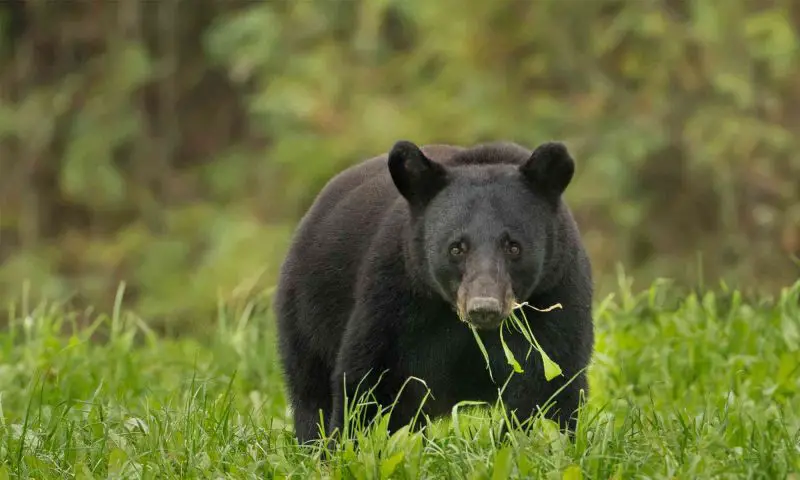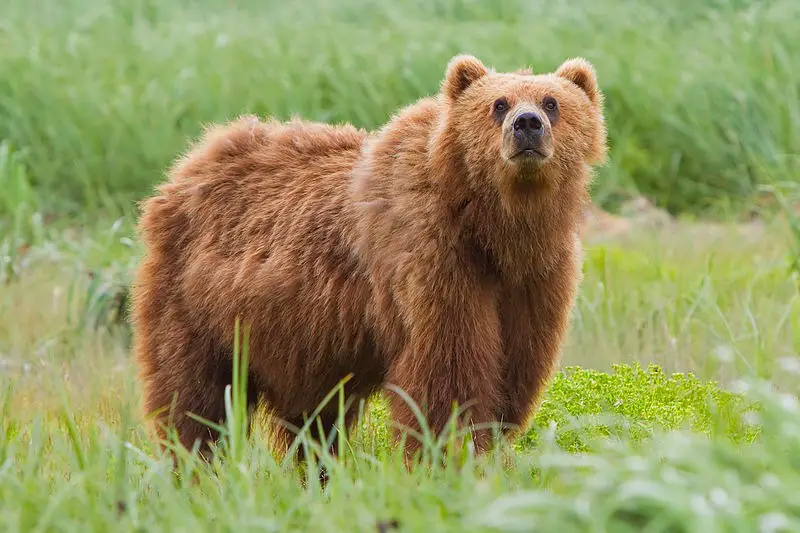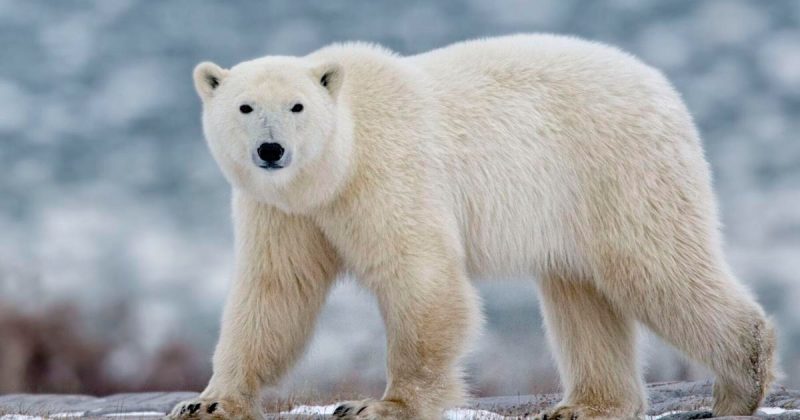California is home to a fascinating variety of bear species, both in the wild and in captivity. While only one species currently roams freely in the state’s forests and mountains, several other impressive bears can be observed in zoos and wildlife parks. Understanding the different types of bears in California offers a unique glimpse into the region’s natural history, conservation efforts, and the role of wildlife education.
Among the wild population, the American black bear is the only extant species still found in California’s diverse landscapes. Historically, the now-extinct California grizzly bear once dominated the region, leaving behind a powerful legacy that still shapes the state’s identity today. These native bears reflect the ecological richness and changes that have occurred over centuries.
In addition to native species, several non-native bears—such as grizzly bears, Kodiak bears, and polar bears—can be seen in captivity across California. These bears, while not naturally found in the state today, are maintained in zoos for conservation, education, and research. In this guide, we’ll explore the five types of bears in California, including pictures and key identification tips to help you recognize each one.
Different Types of Bears Found in California
American Black Bear (Ursus americanus)

The American black bear is the only species of bear currently living in the wild across California. This bear has a highly adaptable nature, allowing it to thrive in a variety of ecosystems from the dense forests of the Sierra Nevada and Cascade Range to the chaparral-covered coastal mountains. Despite their name, black bears in California exhibit a wide range of coat colors including dark brown, cinnamon, and even blonde. Their physical appearance generally includes a short, rounded face, small eyes, and tall ears, with adults weighing between 200 and 600 pounds depending on the season and gender.
Behaviorally, black bears are solitary animals except during mating season or when mothers are raising cubs. They are excellent climbers and swimmers and tend to forage mostly at dawn and dusk. Their diet is omnivorous and largely opportunistic, consisting of fruits, nuts, insects, small mammals, and even carrion. Human-bear conflicts have become more common in recent years, particularly in areas where bears have learned to associate humans with food, such as in campgrounds or residential neighborhoods near forests.
The American black bear plays a critical ecological role by helping to disperse seeds and control insect populations. They hibernate during the winter months, typically choosing dens in hollowed-out trees, under logs, or in caves. Their hibernation cycle is influenced by climate and food availability, especially in lower elevation areas where winters are milder and shorter.
In California, conservation and education programs have been put in place to reduce human-bear conflicts and ensure the continued health of bear populations. With an estimated population of 30,000 to 40,000 individuals, black bears are a relatively common sight in national parks such as Yosemite and Sequoia, where they serve as a key symbol of California’s wilderness heritage.
California Grizzly Bear (Ursus arctos californicus)

The California grizzly bear was once the apex predator of the state, roaming freely across valleys, foothills, coastal regions, and high mountain meadows. A subspecies of the brown bear, this massive and powerful animal was noted for its formidable size—some individuals reportedly weighed over 1,000 pounds. It had a large shoulder hump, a concave facial profile, and thick fur ranging in shades from blonde to dark brown. These bears were known to be both awe-inspiring and feared, earning a significant presence in Native American folklore and early European settler accounts.
Grizzlies were diurnal and omnivorous, but unlike black bears, they were more likely to stand their ground when confronted by humans. They fed on a wide variety of foods including roots, berries, acorns, fish, deer, and even livestock, which contributed to their rapid decline once settlers began expanding westward. By the early 1900s, hunting, habitat destruction, and conflict with ranchers led to the rapid extermination of the species throughout the state.
The last confirmed sighting of a California grizzly occurred in 1924 in Tulare County, sealing the species’ extinction. This loss marked a significant ecological shift, as the grizzly had previously maintained balance within its environment as a top predator. Despite their disappearance, the grizzly remains deeply symbolic for Californians, immortalized on the state flag and serving as a reminder of the wild majesty that once roamed the Golden State.
Although there have been occasional proposals to reintroduce grizzlies to California, these efforts face challenges due to population density, land use, and human safety concerns. Nonetheless, the California grizzly continues to live on in history, art, and the cultural identity of the state.
Grizzly Bears (in zoos only)

While extinct in the wild in California, grizzly bears still reside in several accredited zoos and wildlife sanctuaries across the state. These captive grizzlies are typically North American brown bears (Ursus arctos horribilis), closely related to the extinct California grizzly. In a controlled environment, these bears offer an opportunity for education and wildlife conservation awareness. They can often be observed displaying natural behaviors such as digging, swimming, and foraging in enriched habitats designed to mimic their wild environments.
Grizzly bears are among the most iconic bear species in North America, known for their size, distinctive shoulder hump, and concave facial profile. Adult males often exceed 600 pounds in weight and can reach up to 1,500 pounds in optimal conditions. Their fur ranges in color from light brown to nearly black, with silver or white tips giving them a “grizzled” appearance. Their claws are long and non-retractable, well-suited for digging and defense.
In captivity, grizzlies are fed a balanced diet that mimics their natural foraging habits. Their diet may include fruits, vegetables, meat, and special bear chow. Behavioral enrichment is crucial for their mental well-being and may include puzzle feeders, frozen treats, and various physical challenges. These activities help prevent boredom and encourage natural behaviors.
Several California zoos, such as the Oakland Zoo and San Diego Zoo, maintain grizzly bears as part of broader conservation programs. Visitors are educated about the species’ ecology, historical significance, and the challenges wild grizzlies face in regions like Alaska and Yellowstone. These bears serve as living ambassadors for their species and help foster greater appreciation for bear conservation efforts across North America.
Kodiak Bears (zoo species)

Kodiak bears (Ursus arctos middendorffi) are a subspecies of brown bear found naturally on the Kodiak Archipelago in Alaska, but a few individuals can be seen in California zoos. These bears are among the largest land carnivores on Earth, with some adult males reaching over 1,500 pounds and standing nearly 10 feet tall when on their hind legs. Their immense size, massive bone structure, and thick fur make them a breathtaking sight for zoo visitors.
Physically, Kodiak bears are distinguishable by their broad heads, powerful limbs, and light to dark brown fur that often appears shaggy. While similar in appearance to grizzly bears, they are typically larger and have slightly different skull and dental structures. In the wild, they feed primarily on fish, especially salmon, but also consume plants, berries, and small mammals. Their natural isolation has led to genetic and behavioral differences from other brown bear subspecies.
In California’s zoological parks, Kodiak bears are provided with specialized habitats that include pools, climbing structures, and shaded resting areas. These facilities strive to replicate their native environments as closely as possible. Nutrition is carefully managed, and keepers provide enrichment items to encourage foraging behavior, problem-solving, and physical exercise.
Although native only to Alaska, Kodiak bears serve as important educational tools in California zoos. They highlight biodiversity within the brown bear species and illustrate the effects of geographic isolation on evolution. Their presence helps spark conversations about habitat preservation, climate change, and the importance of protecting the wild spaces that support such remarkable animals.
Polar Bears (in select zoos)

Polar bears (Ursus maritimus) are not native to California or any part of the lower 48 states, but they are housed in a few highly specialized zoo facilities in the state. These Arctic giants are the world’s largest bear species, with adult males weighing up to 1,600 pounds. They are immediately recognizable due to their white fur, long necks, and large paws adapted for swimming and walking across ice. Polar bears are perfectly suited for cold environments, with thick blubber and a dense undercoat beneath their outer fur.
In the wild, polar bears are apex predators, primarily feeding on seals which they hunt from sea ice platforms. Their range spans the Arctic Circle, including Canada, Alaska, Greenland, and parts of Russia. Due to climate change and melting sea ice, polar bears are facing increasing threats in their native habitat, making them a focus of many international conservation efforts.
California zoos that house polar bears must go to great lengths to replicate their natural environment. This includes chilled pools, ice machines, and shaded, cooled rock structures. Their diets in captivity are rich in protein and fat, and keepers provide them with fish, meat, and high-calorie supplements to simulate their native diet. Behavioral enrichment is also important, including toys, scent trails, and puzzles to keep their minds engaged.
Zoos like the San Diego Zoo and others that have housed polar bears use these majestic animals to educate the public on the impacts of global warming and the urgent need for climate action. Through immersive exhibits and interactive learning experiences, visitors are encouraged to understand and advocate for the survival of this iconic species far from its icy homeland.






